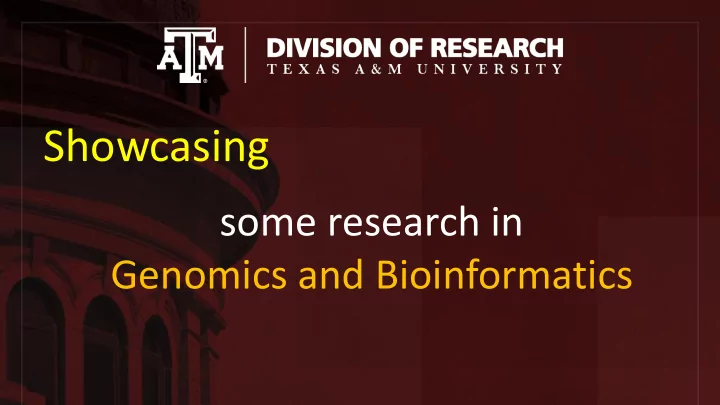

Showcasing some research in Genomics and Bioinformatics
Sacchettini Lab: Research Tuberculosis What is it? Tuberculosis (TB) is an infectious disease caused by a bacterium. Approximately two billion people, one third of the Earth's population, are infected with TB, mostly in the third world although there has been a resurgence in the first world due largely to the spread of HIV/AIDS. There are approximately 8.5 million new active cases and 2 million deaths annually from TB. Most of these deaths are preventable with antibiotic treatment.
Sacchettini Lab: Research Malaria What is it? Malaria is a widespread vector-borne disease caused by parasites in the Plasmodium family (specifically Plasmodium falciparum, Plasmodium vivax, Plasmodium ovale, and Plasmodium malariae) and transmitted by the bite of an infected female Anopheles mosquito. Each year between 300 and 500 million people are infected and more than one million people die, most of them children and pregnant women. Malaria is associated with tropical and subtropical climates because the warm temperature allows the Anopheles mosquito to grow year round.
Other Local NMR Labs/Groups: • Center for Chemical Characterization and Analysis (CCCA) in the Chemistry Department • Dr. Christian Hilty's NMR Research Group in the Chemistry Department. • Dr. Tatyana Igumenova's NMR Research Group in the Biochemistry & Biophysics Department. • Dr. Steven Wright's NMR Imaging Research Group in the Electrical and Computer Engineering Department. • Dr. Joseph Ross's Condensed Matter Research Group in the Physics and Astronomy Department. • Magnetic Resonance Imaging in Veterinary Medicine. • Vegetable and Fruit Improvement Center in the Horticultural Science Department .
Recommend
More recommend